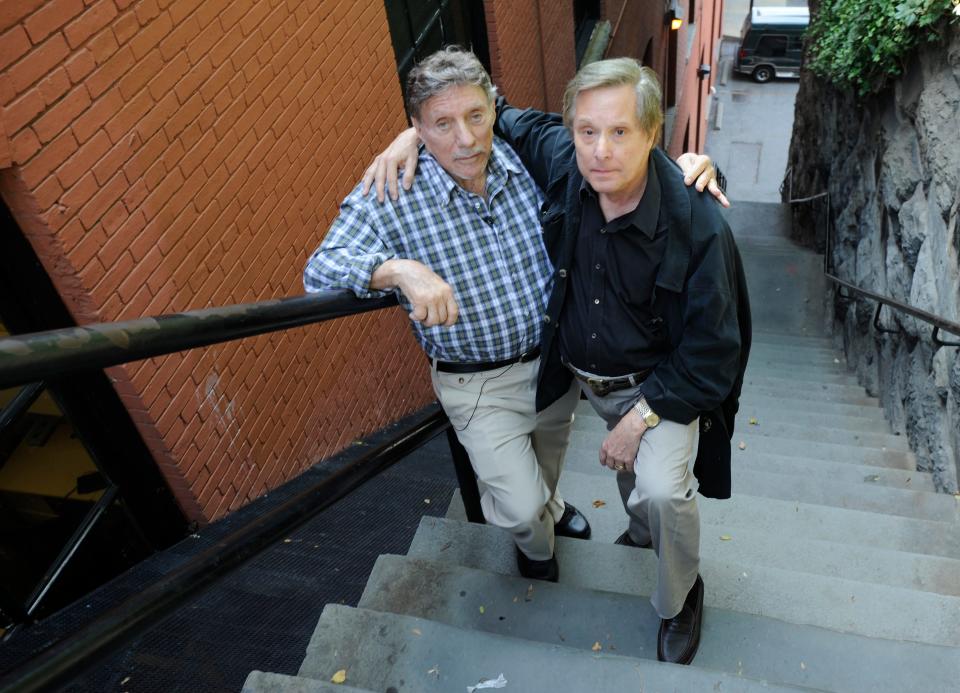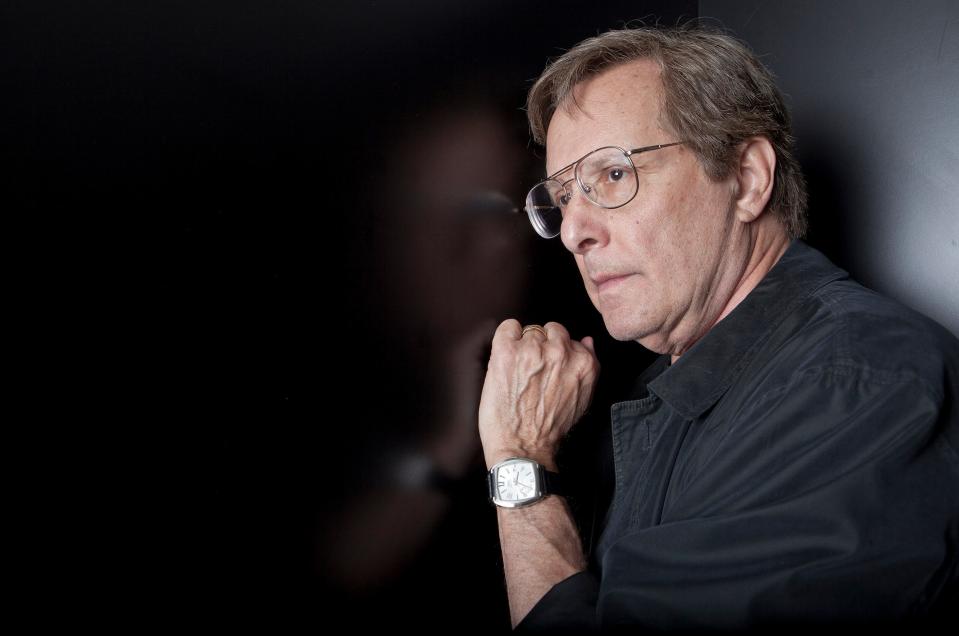'The Exorcist': That time William Friedkin gave us a tour of the movie's making
- Oops!Something went wrong.Please try again later.
- Oops!Something went wrong.Please try again later.
In 2013, USA TODAY spent the day with "The Exorcist" director William Friedkin and author William Peter Blatty in downtown Washington, where they discussed important sites and inspiration behind the filming of the horror classic for its 40th anniversary.
In honor of Friedkin's death Monday at age 87, here is that story:
WASHINGTON − While some locals treat the steep "Exorcist steps" in the Georgetown neighborhood as a workout, movie fans see them as a mecca − so much so that the iconic house near the incline has a black fence around it to ward off intruders and horror nerds.
Returning to the area also is a religious experience for the creative minds at the center of the 1973 horror classic "The Exorcist": director William Friedkin and William Peter Blatty, the original "Exorcist" novelist who graduated from Georgetown University in 1950.
Blatty even remembers when the "Exorcist steps'' were just the "Hitchcock steps,'' named for Alfred Hitchcock. "They always evoked something spooky and suspenseful," says Blatty.
So has "The Exorcist," which has terrified and disturbed audiences for decades with the story of the possession of young Regan MacNeil (Linda Blair) and the exorcism by priests Father Merrin (Max von Sydow) and Father Karras (Jason Miller).
William Friedkin dies: Oscar-winning director of 'French Connection' and 'The Exorcist,' was 87

To make the house usable for the climactic "Exorcist" scene, Friedkin built an extension with a false front that allowed for Karras to jump to his death − while being possessed by the demon Pazuzu − and fall down the stairs, since they were a little ways from the actual house.
The house at 3600 Prospect Avenue was never used for interior shots − those were all done on a New York City soundstage. Friedkin considered shooting inside of Sen. Lloyd Bentsen's house, but on their second visit to reconnoiter the place, "Sen. Bentsen says, 'Well, do you have a check for $1 million you can give me right now?' He put his hand out," Blatty recalls with a laugh.
They shot in several places on the Georgetown campus, the place that not only strengthened Blatty's own faith and inspired him to become a writer, but also led to some aspects of "The Exorcist."
"The film is in many ways a hymn to Georgetown," says Friedkin.
It was in White-Gravenor Hall in a New Testament class where Blatty first heard of the 1949 exorcism of Maryland boy Roland Doe and that sparked his interest in writing about the possession of Regan. And the infamous fall of Father Karras was influenced by Blatty watching one of his physics classmates take a hospitalizing tumble after trying to steal a final exam.
Blatty modeled Karras after his own feelings, he says. The death of Karras' mother caused him to lose faith in God for a time, while the passing of Blatty's mother also was deeply traumatic, "a period when my faith was more a hope than a belief."
Exploring the evidence of his faith in writing "The Exorcist" "was very gratifying because it solidified my belief that I would one day see my mother again," Blatty says.
Over the years "The Exorcist" movie has grown in popularity, but Blatty missed the spiritual aspects from his original work, so Friedkin added 12 minutes for an extended director's cut that was released into theaters in 2000.
"I felt that Bill created this, and the film had played by that time for about 27 years with those cuts that worked marvelously well," Friedkin says. "I thought, 'Why shouldn't Bill have the version he wants at that point?' "
One of the additional scenes between bouts of the exorcism had Karras wondering what the point of the whole thing was and why a demon would invade the body of a little girl.

"And Merrin answers that the girl is not the target," Blatty says. "The girl is us, everyone of us in this house, and the purpose is to make us feel vile, bestial, rotten and corrupt so that even if there were a God, he could not possibly love us.
"That in my head was not only the moral context, but it was the context that gave the audience a reason not to hate itself for liking the most sensational parts of the film."
The most infamous moments of "The Exorcist" − the head-spinning, the vomiting, the abhorrent sexual use of a crucifix − are what many movie fans remember. But it's about something much deeper, says the director.
"It was not a promotion for the Catholic Church but definitely a story about the power of Christ and the mystery of faith that continues to this day," Friedkin says. "I'm flattered when people admire it, but when they call it a horror that's not how I feel about it."
Blatty replies softly and simply: "Amen."
This article originally appeared on USA TODAY: William Friedkin gave us an 'Exorcist' movie tour. Here's what we saw.

